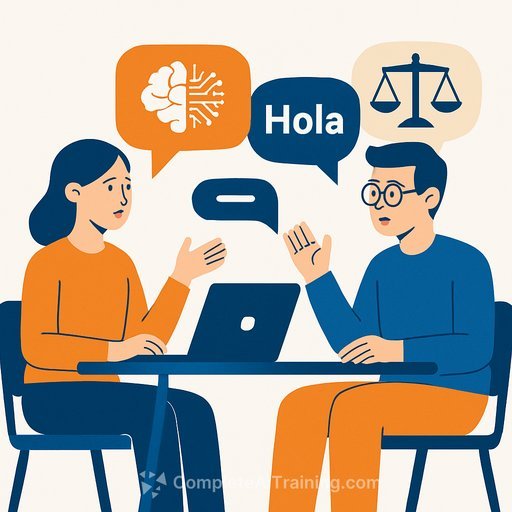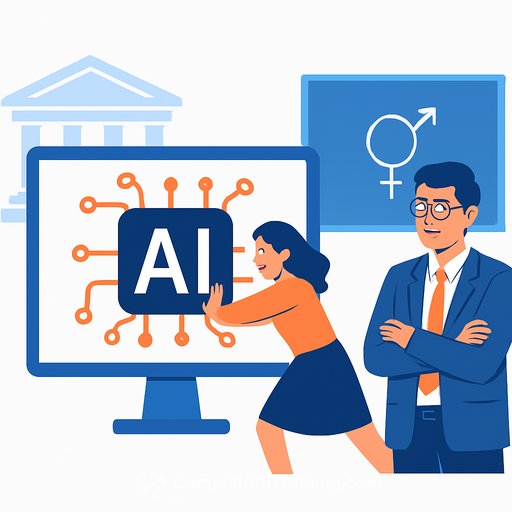AI in Education: A Principled Framework That Connects Goals, Learning Models, and Technologies
AI is now part of higher education. The real work is deciding how it serves learning, not how it replaces it. A new framework from researchers at the University of Colorado Boulder connects educational goals to learning models and the practical use of generative AI, so your courses keep their core values while gaining new capability.
It moves past hype and fear. The focus: align tools with purpose, emphasize process over product, and build stronger learning communities around human judgment, ethics, and collaboration. Read the research summary on arXiv here.
Start with goals, not tools
- Define the purpose: critical thinking, creativity, ethical reasoning, civic engagement, and belonging.
- Connect goals to learning models: social learning, practice and feedback, metacognition, transfer of knowledge.
- Then select AI uses that reinforce those goals, not shortcuts that bypass learning.
Core principles
- Process over product: Reward reasoning, iteration, reflection, and application. The final answer matters, but how students got there matters more.
- Human values: Keep purpose front and center. AI assists; educators lead.
- Equity: Ensure access, onboarding, and support so AI does not widen gaps.
- Metacognition: Make students aware of how AI affects their thinking and where it can cause blind spots.
- Community: Use AI to free time for discussion, collaboration, and mentorship.
- Assessment alignment: Evaluate skills that AI cannot do for the student: transfer, critique, oral defense, and judgment.
Watch for "cognitive debt"
AI can produce output that looks like learning without the learning happening. That trains students to outsource thinking and builds "cognitive debt."
- Require version histories, scratch work, and reasoning traces.
- Use oral checks, whiteboard explanations, and "teach-back" moments.
- Include short reflections on how AI was used and where it misled.
- Grade process artifacts alongside the final product.
Practical uses that add value (not replace humans)
- Skill-building co-pilot: Guided practice in coding, data analysis, and writing with embedded prompts and guardrails.
- Students train simple models: Build small domain agents or simulations to deepen conceptual understanding and judgment.
- Feedback at scale: AI drafts comments from your rubric; instructors review, edit, and finalize.
- Admin automation: Website updates, LMS housekeeping, and resource curation, so staff can focus on high-value support.
Support foundational skills without stigma
Use adaptive tools to close gaps in math and writing so class time moves to higher-order work. Systems inspired by approaches like Carnegie Learning can help, paired with instructor coaching and clear expectations.
Course and assessment design moves
- AI use policy: Specify allowed tools, disclosure requirements, and what counts as independent work.
- Process artifacts: Require planning notes, prompts used, drafts, and reflection on revisions.
- Rubrics for thinking: Criteria for reasoning quality, transfer to new contexts, critique of sources, and ethical considerations.
- Authentic tasks: Local data, messy problems, oral defenses, and collaborative synthesis that resist simple AI answers.
- AI critique drills: Have students evaluate AI outputs for accuracy, bias, and missing context.
Department-level implementation playbook
- 90-day pilots: Select 2-3 courses, define goals, baseline metrics, and guardrails. Iterate fast.
- Faculty support: Short workshops on prompt design, assessment redesign, and academic integrity with AI.
- Student onboarding: Short modules on productive AI use, limits, and disclosure norms.
- Data and ethics: Approve tools, document privacy, and set retention policies.
- Review cadence: Midterm and end-of-term audits on learning outcomes, equity effects, and workload.
What to measure
- Learning gains on core concepts and transfer tasks
- Quality of reasoning and metacognitive growth
- Equity impacts across preparation levels
- Time saved for instructors and TAs and where it was reinvested
- Sense of belonging and quality of peer interaction
Guardrails that keep trust
- Disclose where AI is used in feedback and grading workflows.
- Retain human judgment for grades, exceptions, and sensitive decisions.
- Use institution-approved tools; avoid uploading student data to public systems.
- Offer non-AI paths for students who opt out within policy.
Why universities still matter
As AI handles more routine outputs, the value of higher education is clear: purpose, community, and human growth. Institutions that lead with those values-and use AI to strengthen them-will deliver better learning and better lives.
We are early in this work. Pilot, measure, reflect, and adjust. The framework offers direction; the practice will come from your teams, your students, and consistent evaluation.
For a deeper look at the framework, see the arXiv summary here.
Next step
If you're planning faculty development or student upskilling around AI, explore curated learning paths by role at Complete AI Training.
Your membership also unlocks:






